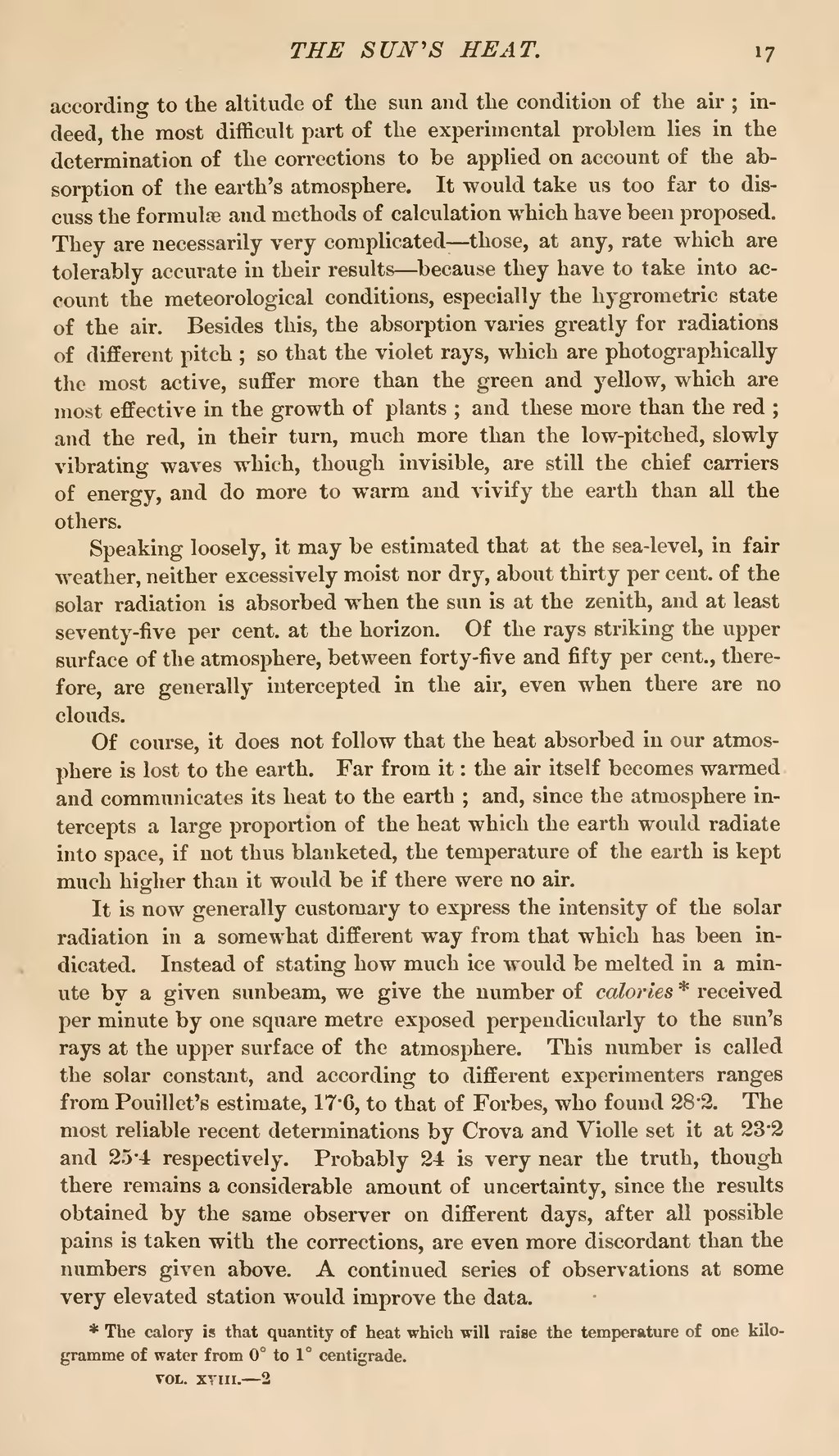according to the altitude of the sun and the condition of the air; indeed, the most difficult part of the experimental problem lies in the determination of the corrections to be applied on account of the absorption of the earth's atmosphere. It would take us too far to discuss the formulæ and methods of calculation which have been proposed. They are necessarily very complicated—those, at any, rate which are tolerably accurate in their results—because they have to take into account the meteorological conditions, especially the hygrometric state of the air. Besides this, the absorption varies greatly for radiations of different pitch; so that the violet rays, which are photographically the most active, suffer more than the green and yellow, which are most effective in the growth of plants; and these more than the red; and the red, in their turn, much more than the low-pitched, slowly vibrating waves which, though invisible, are still the chief carriers of energy, and do more to warm and vivify the earth than all the others.
Speaking loosely, it may be estimated that at the sea-level, in fair weather, neither excessively moist nor dry, about thirty per cent, of the solar radiation is absorbed when the sun is at the zenith, and at least seventy-five per cent, at the horizon. Of the rays striking the upper surface of the atmosphere, between forty-five and fifty per cent., therefore, are generally intercepted in the air, even when there are no clouds.
Of course, it does not follow that the heat absorbed in our atmosphere is lost to the earth. Far from it: the air itself becomes warmed and communicates its heat to the earth; and, since the atmosphere intercepts a large proportion of the heat which the earth would radiate into space, if not thus blanketed, the temperature of the earth is kept much higher than it would be if there were no air.
It is now generally customary to express the intensity of the solar radiation in a somewhat different way from that which has been indicated. Instead of stating how much ice would be melted in a minute by a given sunbeam, we give the number of calories[1] received per minute by one square metre exposed perpendicularly to the sun's rays at the upper surface of the atmosphere. This number is called the solar constant, and according to different experimenters ranges from Pouillet's estimate, 17·6, to that of Forbes, who found 28·2. The most reliable recent determinations by Crova and Violle set it at 23·2 and 25·4 respectively. Probably 24 is very near the truth, though there remains a considerable amount of uncertainty, since the results obtained by the same observer on different days, after all possible pains is taken with the corrections, are even more discordant than the numbers given above. A continued series of observations at some very elevated station would improve the data.
- ↑ The calory is that quantity of heat which will raise the temperature of one kilogramme of water from 0° to 1° centigrade.
